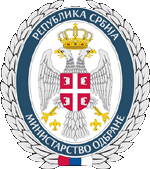|
REPUBLIC OF SERBIA MINISTRY OF DEFENCE
MINISTRY OF DEFENCE Material Resources Sector Defensive Technologies Department
|
release characteristicS of alginate
Institute of Chemistry, Technology and Metallurgy, Belgrade, Serbia, jilic@tmf.bg.ac.rs JASNA T. STAJIĆ-TROŠIĆ Institute of Chemistry, Technology and Metallurgy, Belgrade, Serbia MIRKO Z. STIJEPOVIĆ Institute of Chemistry, Technology and Metallurgy, Belgrade, Serbia DRAGUTIN M. NEDELJKOVIĆ Institute of Chemistry, Technology and Metallurgy, Belgrade, Serbia BRANKO M. BUGARSKI Faculty of Technology and Metallurgy, Belgrade, Serbia ALEKSANDAR S. GRUJIĆ Institute of Chemistry, Technology and Metallurgy, Belgrade, Serbia
Abstract: There is a variety of natural polymeric systems that have been investigated for the controlled release of dye tracers. Alginate, a naturally occurring biopolymer extracted from brown algae, has several unique properties that have enabled it to be used as a matrix for the entrapment and/or delivery of a wide variety of biologically active agents. The aim of this work is to monitor release kinetics of tracers from microbeads. Alginate microbeads were obtained by electrostatic droplet method. Three dye tracers with different molecular weight (acridine orange, blue dextran, methylene blue) encapsulated in resulting alginate microbeads are released by diffusion of tracer through the pores of the polymer network. Based on these measurements the layoff curves should give an answer on the impact of the molecular size of the used tracers on the diffusion rate from microbeads. In order to achieve the slow release of tracers alginate microbeads were coated with chitosan. Chitosan has an impact on reducing the porosity of gel, which further led to lower release of tracers from microbeads. Comparative analysis of the obtained layoff curves illustrates the influence of the microbeads preparation process on diffusion rate of tracers. Keywords: Hydrogels, Microbeads, Alginate, Tracers, Diffusion.
|
|||||
|
||||||

